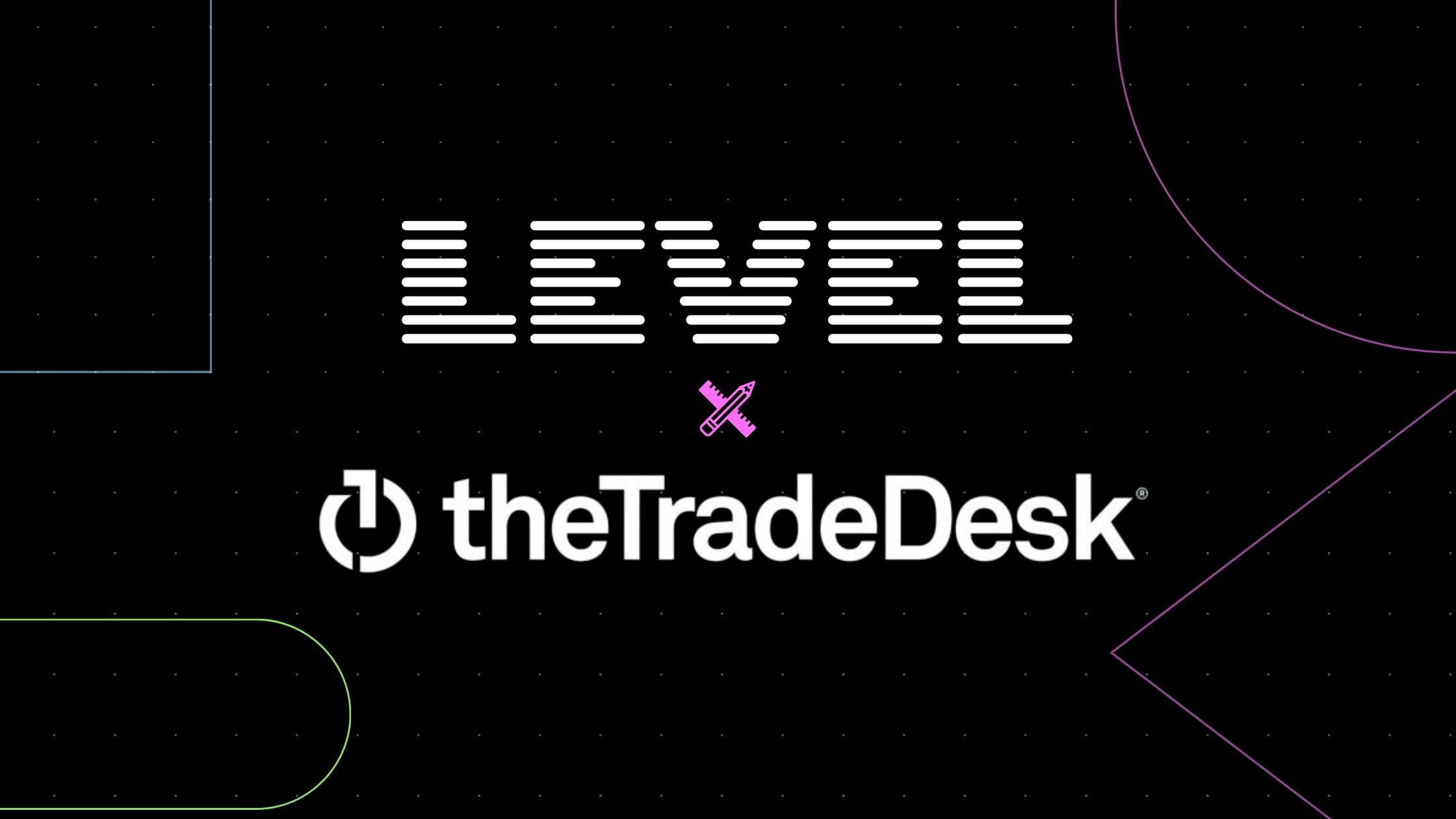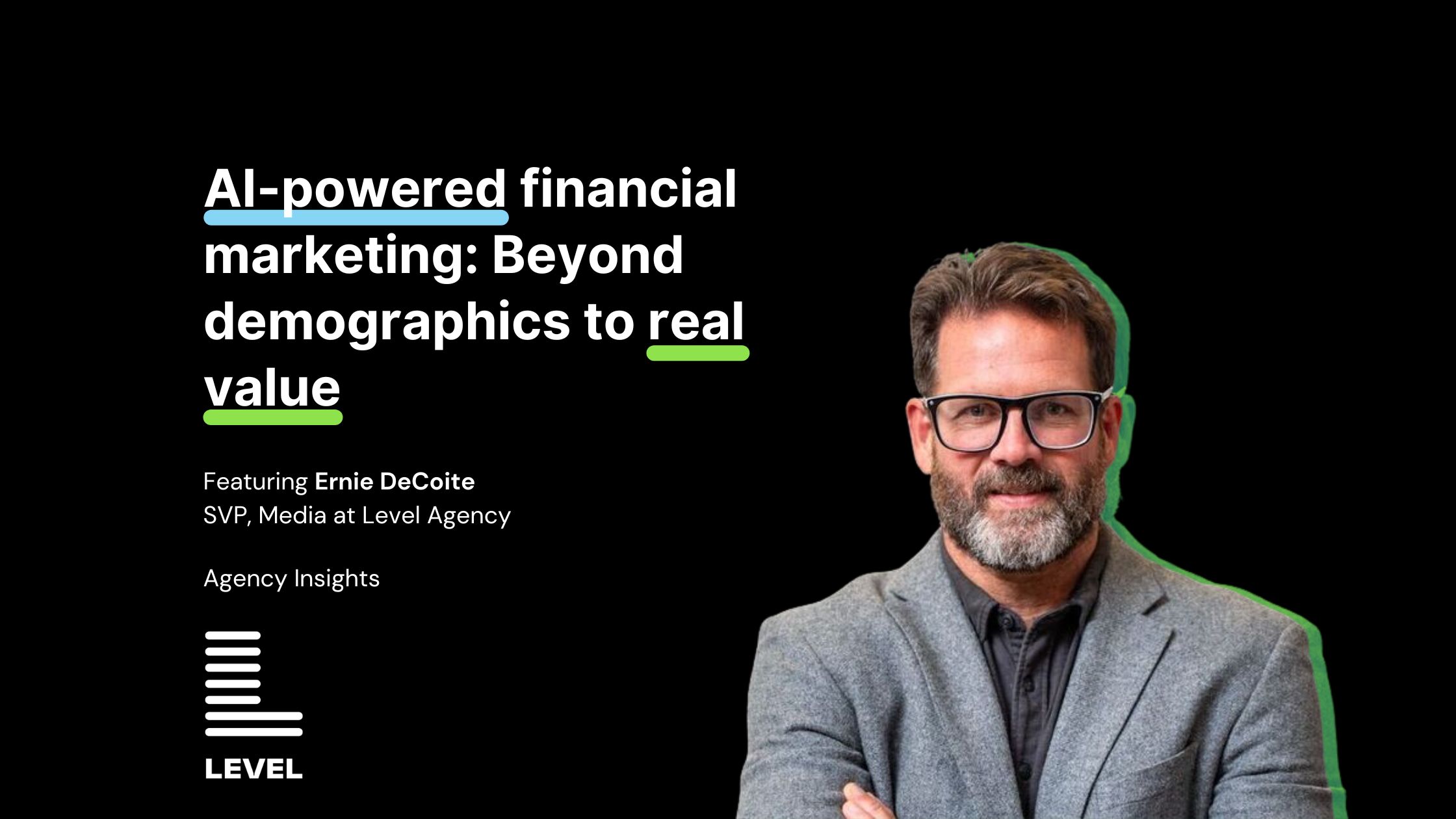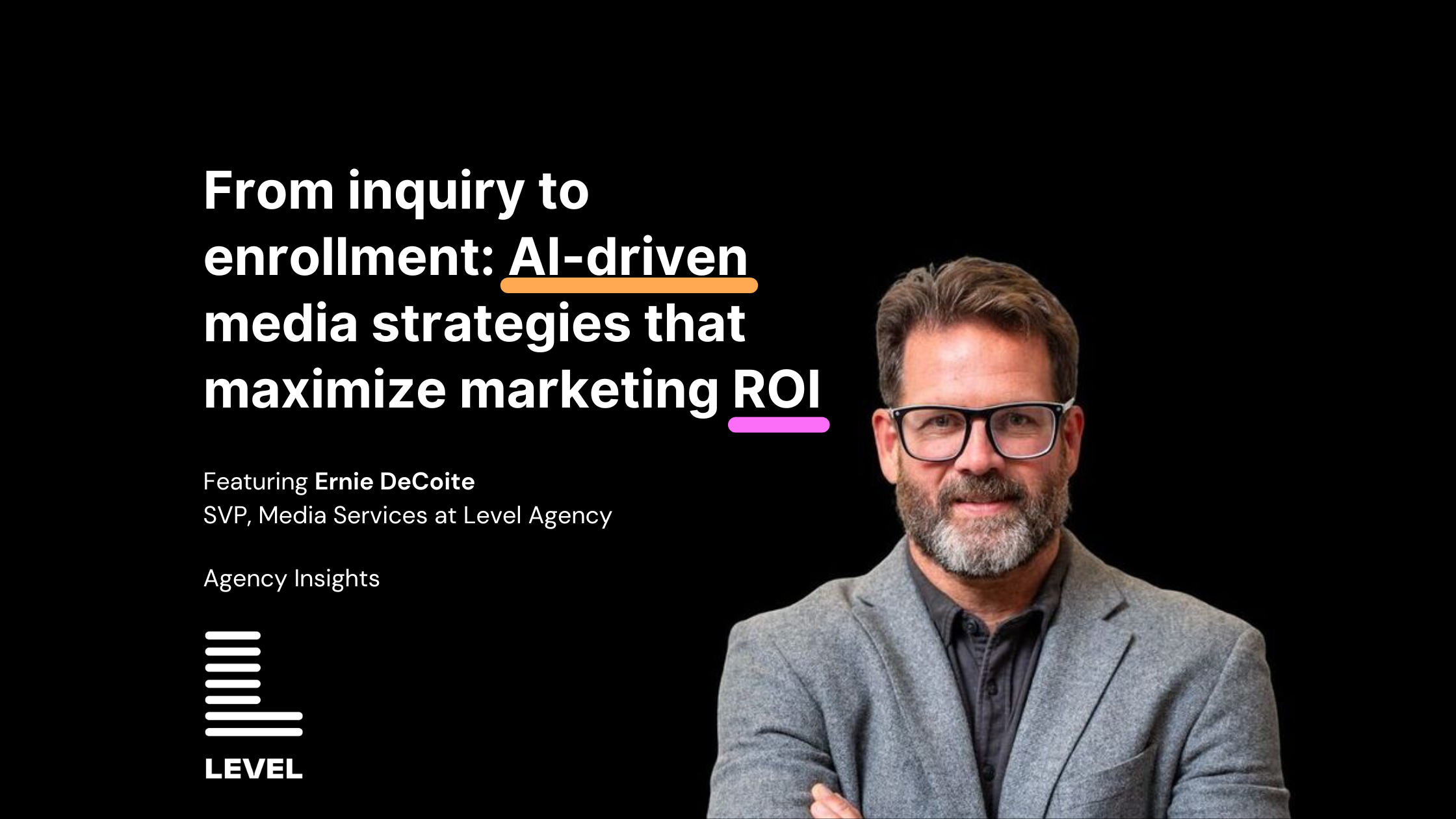At our inaugural Level Agency Summit earlier in 2021, we had a roster of spectacular speakers. One of them was Mike Rubino, a visual design manager with LUMA Institute, who stopped by to talk about design thinking and human-centered design.
Rather listen than read? Check out the latest episode of Test. Learn. Grow., as Mike gives us an overview of the LUMA System—a framework for practicing human-centered design that people can apply to tackle problems of all sizes.
What is design thinking?
From the font in a book to the room you’re sitting in, from the clothes you’re wearing to the systems or processes you use in your day-to-day work, everything is designed. And, broadly speaking, improving on any one of those things is designing. The conclusion that LUMA has come to is that everyone is a designer, so it stands to reason that everyone can adopt a designer’s mindset, or employ design thinking to solve a problem. And we’re rarely solving a problem for the sake of the problem, right? We’re solving a problem in service of a person or a customer or client, which leads us to human-centered design.
What is human-centered design?
With us so far? At LUMA, their main goal is to empower organizations to work better and make better things, and they do that by teaching the LUMA System, a collection of human-centered design methods and skills. But what is human-centered design? It’s an approach to creative problem-solving that focuses on people above other factors—whether the challenge is making a better product, process, service or anything else. And with innumerable ways to be innovative, the LUMA System helps identify approaches without being overwhelming and time-consuming.
The LUMA System Methods
In order to create their system, the LUMA Institute combed through thousands of problem-solving methods that we use to create and innovate in order to find those they think are the most approachable and can be used by everyone. They’ve grouped these 36 organized into 3 fundamental design skills: Looking, Understanding and Making.
- Looking concerns methods that observe the human experience and doing research to see how people interact. This grouping includes things like interviewing and a method called “What’s on Your Radar?”—an exercise in which people plot items according to personal significance.
- Understanding is about analyzing challenges and opportunities. This could involve the creation of stakeholder maps and persona profiles.
- Making is about envisioning the future. Here you’ll find methods like round robin and storyboarding.
As Mike explains, this isn’t a process to follow step by step. You can use these methods in whatever order works for your end goal. But ultimately, these are building blocks for growing your empathy, your imagination, and your curiosity – vital in human-centered design.
LUMA helps organizations worldwide scale design thinking, bring about culture change, and deliver impact. Please visit their website to learn more about the LUMA System, as well as their courses, certifications, LUMA Workplace®, and “Innovating for People: Handbook of Human-Centered Design Methods,” a hard-copy guide to all 36 human-centered design methods.
What did we miss? Give us your thoughts in a comment!









